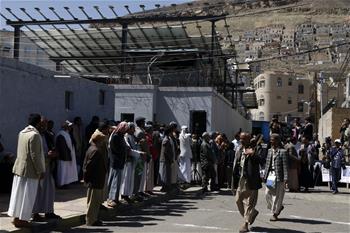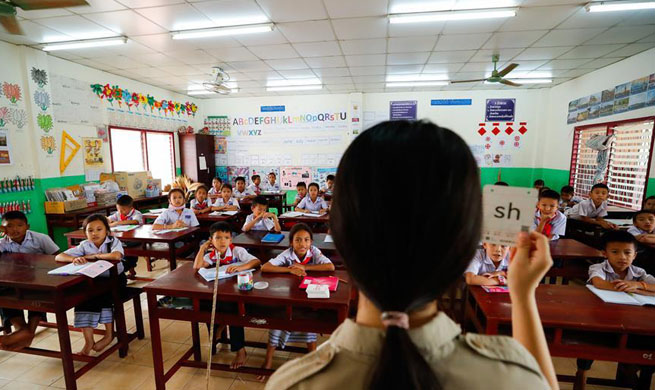TOKYO, April 17 (Xinhua) -- Japan's total population, including foreigners, fell to 126 million, down 263,000, as of October 1, 2018 compared to the same period a year earlier, according to the latest data released by Japan's Ministry of Internal Affairs and Communications, marking the eighth consecutive year of negative growth.
Some analysts believe that various economic and social problems caused by negative population growth are deeply troubling Japan and may drag down its economic development for a long period.
Among the total Japanese population, the proportion of working population aged 15 to 64 fell to 59.7 percent, the lowest since comparable data became available in 1950. The proportion of aging population over 70 years old reached 20.7 percent, exceeding 20 percent for the first time.
Japan's rapidly declining population is widely cited in the media and economic circles as one of the main reasons for the country's economic contraction and downturn.
Firstly, Japan's domestic market is shrinking while overall consumption tends to fall as the population continues to decline. Due to bearish market outlooks and dim expectations, business investment will also decline. The situation continues to ferment, creating a chain reaction in all walks of life and resulting in weak domestic demand in the economy as a whole and a prolonged period of contraction.
Secondly, negative population growth has left Japan mired in labor shortage. In order to solve the problem of labor shortage, the Japanese government is vigorously promoting employment of women and the elderly, while further opening the employment policy for foreigners.
However, Japan has a special employment system for women, the elderly and foreigners, which treats them differently from regular employees. The existence of such cheap labor force has become the reason for many enterprises to depress wages or refuse to raise wages, making salary increases hopeless for employees, or even causing lower wages. Stagnant incomes, in turn, depress consumption, exacerbating the squeeze.
Thirdly, the proportion of the elderly population has increased sharply, causing double negative effects. On the one hand, Japan's social burdens such as medical and aging care continue to grow, leading to worsening long-term fiscal deficit. On the other hand, the Japanese who have not yet entered an old age lack confidence in social security and tend to plan for retirement in advance, which is also an important reason for Japan's consumption contraction.
A large number of politicians and scholars in Japan believe that the government had failed to take effective measures in time as it believed that "one day a third baby boom will come," while actually Japan's total fertility rate has dropped to 1.57 in 1989, or the first year of the Heisei era, indicating the serious problem of a low birth rate.
In the 30 years of Heisei, the issue of an aging population and fewer children in Japan has become even more severe, leading to an unprecedented aging society in the world.
Japan's economy has rebounded in recent years and is on track for its longest post-World War II recovery. However, real gross domestic product growth slumped from 1.9 percent in 2017 to 0.7 percent in 2018 due to natural disasters and global trade tensions. At the same time, with economic growth hovering around 1 percent, it is hard for Japanese economists and ordinary citizens alike to be confident about the future.
The International Monetary Fund (IMF) recently released the latest issue of its report on world economic outlook and downgraded the Japanese economic growth forecast to 1 percent in 2019, down 0.1 percent. Growth is expected to fall further to 0.5 percent in 2020, in light of an increase in the consumption tax in October 2019.
The IMF said that Japanese Prime Minister Shinzo Abe's government policy of stimulating domestic demand can prevent sharp decline of the Japanese economy, but the world economy is still facing downside risk and uncertainty of trade policies remains.
Japan's economy is experiencing its longest expansion period since World War II, but also faces challenges such as an aging population and high debt levels, and the government needs to take effective measures to ensure sustainable and inclusive economic growth, according to a recent report released by the Organization for Economic Cooperation and Development.
Japanese economist Heizo Takenaka said Abe's cabinet did make efforts to promote economic recovery, but had left many problems for the future in terms of fiscal reconstruction and social security reform.
Japan's potential economic growth rate is already very low, he said. If left unchecked, Japan's economy will stagnate for a long time and leave the burden of social security unbearable.
It has reached a crucial turning point to decide whether to unleash potential and remake Japan, or to let the problems of an aging population and low birth rate further encumber the country, Takenaka said.













